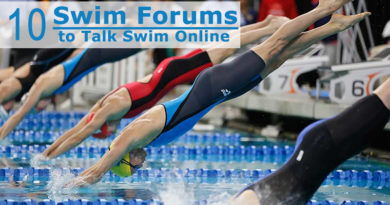Can Swimming Alone Create a Toned, Strong Body?
The idea of achieving a well-proportioned physique without ever touching a dumbbell sounds appealing—especially for those who find traditional gym routines monotonous or intimidating. Swimming, often praised for its cardiovascular benefits, also happens to be one of the most effective full-body toning exercises available. But can it truly replace weight training for muscle definition and strength?

How Swimming Builds Muscle Differently Than Weights
Unlike weightlifting, which isolates specific muscle groups, swimming engages nearly every part of the body simultaneously. Water provides natural resistance—about 12-14% denser than air—meaning every stroke and kick requires effort from multiple muscle groups.
Key differences in muscle development:
- Longer, leaner muscles: Swimming emphasizes endurance over power, creating toned rather than bulky muscle.
- Improved symmetry: The bilateral nature of strokes ensures balanced development.
- Core integration: Rotational movements in freestyle and butterfly activate the obliques more effectively than many ab machines.
A study published in the Journal of Sports Sciences found that competitive swimmers had significantly higher core activation during strokes compared to traditional crunches.
Fat Loss and Metabolic Benefits
Swimming isn’t just about muscle tone—it’s also an efficient fat burner. Because water conducts heat away from the body 25 times faster than air, the body works harder to maintain temperature, increasing calorie expenditure.
Calorie burn comparison (30 minutes, moderate effort):
| Activity | Calories Burned (150-lb person) |
| Swimming (freestyle) | 250-350 |
| Weightlifting (moderate) | 110-180 |
| Running (6 mph) | 300-370 |
While running may torch slightly more calories, swimming does so without joint stress, making it sustainable long-term. Research from the International Journal of Aquatic Research noted that regular swimmers had lower body fat percentages and smaller waist measurements than non-swimmers, even with similar exercise durations.
Posture and Functional Strength

Hours spent at desks and on phones often lead to rounded shoulders and weak back muscles. Swimming counteracts this by:
- Strengthening the upper back and shoulders through pulling motions
- Opening the chest via breaststroke and butterfly
- Encouraging spinal alignment through buoyancy
A 2020 study in Clinical Biomechanics found that participants who swam three times a week showed measurable improvements in posture after eight weeks.
Limitations to Consider
Swimming is remarkably effective, but it isn’t a complete replacement for weight-bearing exercise. Key gaps include:
- Bone density: Water’s buoyancy means bones aren’t stressed enough to stimulate significant density improvement, per the NIH Osteoporosis and Related Bone Diseases Resource Center.
- Maximal strength: While swimming builds endurance, it won’t increase raw power like heavy squats or deadlifts.
- Grip and explosive strength: Strokes don’t replicate the demands of lifting heavy objects.
Structuring a Swim Routine for Toning
For those prioritizing muscle definition and fat loss:
- Frequency: 4-5 sessions weekly (30-45 minutes each)
- Stroke variety:
- Freestyle: Shoulders, back, and triceps
- Breaststroke: Inner thighs and glutes
- Butterfly: Core and chest
- Intensity: Include intervals (e.g., 10x50m sprints with 20 sec rest) to boost metabolism.
Adding equipment like pull buoys or paddles can further increase resistance.
Common Questions
- Can swimming alone create visible abs?
Yes, but body fat percentage matters. Swimming builds core strength, but abs become visible at lower body fat levels (typically below 22% for women). - How long until results are noticeable?
Muscle tone improves within a month; fat loss becomes apparent after 8-12 weeks of consistent training. - Should I supplement swimming with other exercises?
For balanced fitness, include 1-2 weekly sessions of bodyweight or resistance training to address bone density and maximal strength. - Is swimming effective for glute development?
Breaststroke and dolphin kicks engage the glutes more than other strokes, but results are subtler than with weighted squats.
Making It Work for You
Swimming offers a low-impact, high-reward path to a toned physique—particularly for those who dislike gym environments or need joint-friendly exercise. While it won’t replicate all benefits of weight training, it provides unique advantages in muscle balance, flexibility, and endurance.
For beginners, structured classes like those at SwimRight Academy focus on proper technique to maximize results, while many community pools also offer adult swim classes. Consistency, not intensity, remains key to long-term transformation.
Save It/ Pin It




